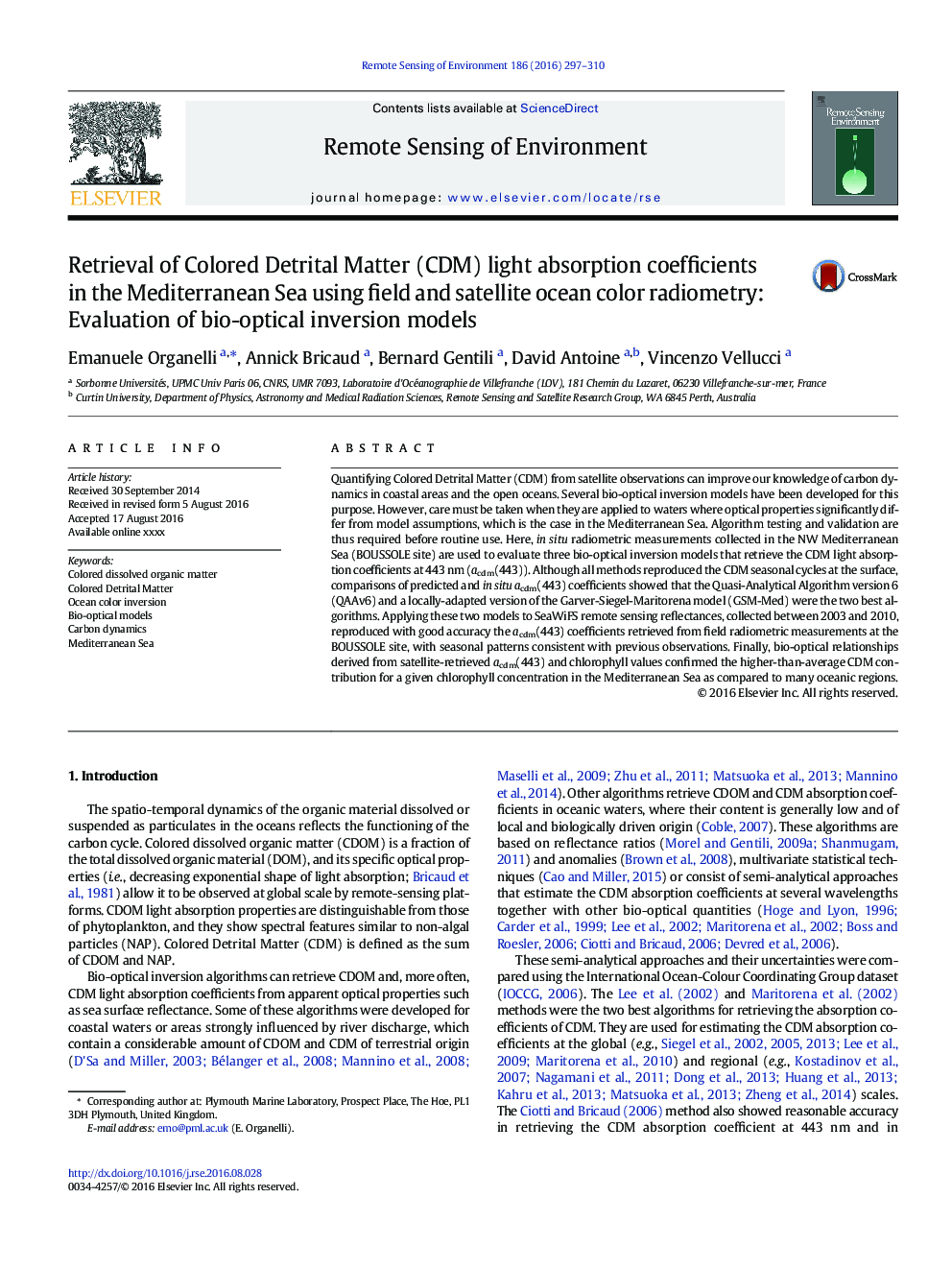| Article ID | Journal | Published Year | Pages | File Type |
|---|---|---|---|---|
| 6345070 | Remote Sensing of Environment | 2016 | 14 Pages |
Abstract
Quantifying Colored Detrital Matter (CDM) from satellite observations can improve our knowledge of carbon dynamics in coastal areas and the open oceans. Several bio-optical inversion models have been developed for this purpose. However, care must be taken when they are applied to waters where optical properties significantly differ from model assumptions, which is the case in the Mediterranean Sea. Algorithm testing and validation are thus required before routine use. Here, in situ radiometric measurements collected in the NW Mediterranean Sea (BOUSSOLE site) are used to evaluate three bio-optical inversion models that retrieve the CDM light absorption coefficients at 443Â nm (acdm(443)). Although all methods reproduced the CDM seasonal cycles at the surface, comparisons of predicted and in situ acdm(443) coefficients showed that the Quasi-Analytical Algorithm version 6 (QAAv6) and a locally-adapted version of the Garver-Siegel-Maritorena model (GSM-Med) were the two best algorithms. Applying these two models to SeaWiFS remote sensing reflectances, collected between 2003 and 2010, reproduced with good accuracy the acdm(443) coefficients retrieved from field radiometric measurements at the BOUSSOLE site, with seasonal patterns consistent with previous observations. Finally, bio-optical relationships derived from satellite-retrieved acdm(443) and chlorophyll values confirmed the higher-than-average CDM contribution for a given chlorophyll concentration in the Mediterranean Sea as compared to many oceanic regions.
Related Topics
Physical Sciences and Engineering
Earth and Planetary Sciences
Computers in Earth Sciences
Authors
Emanuele Organelli, Annick Bricaud, Bernard Gentili, David Antoine, Vincenzo Vellucci,
